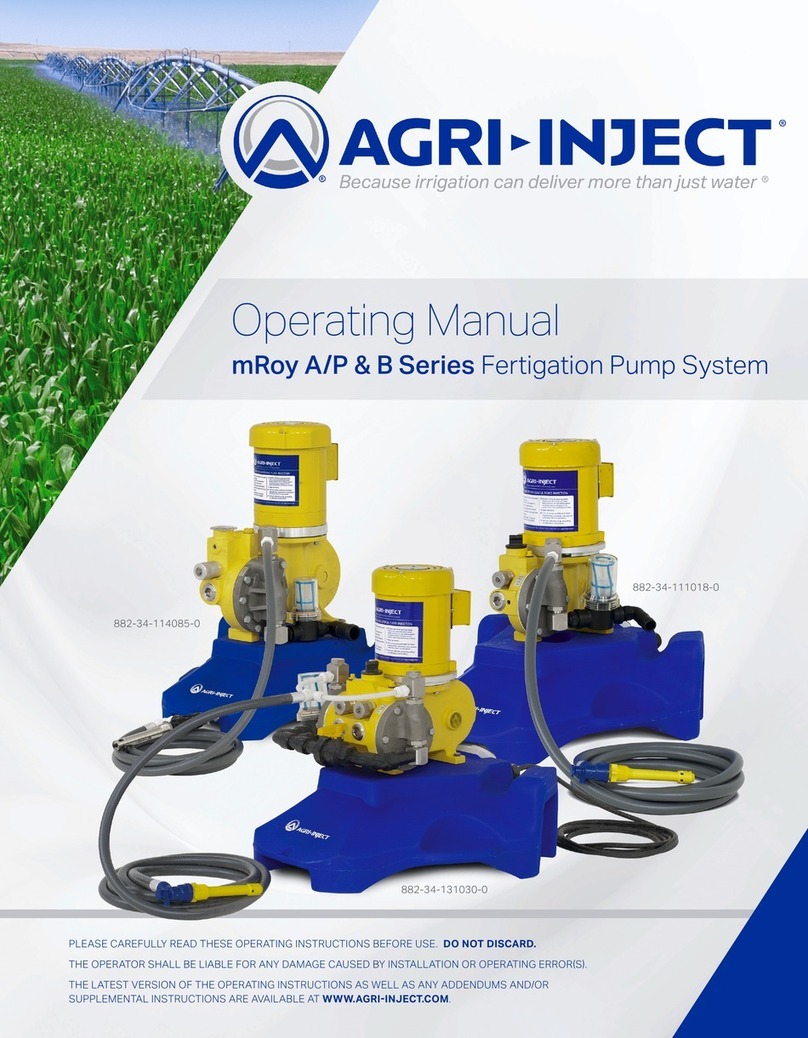
Operating Instructions: Insectigator Fluid Injection System 4
3.0 GENERAL SYSTEM ADVISORY
3.1 ABOUT THIS SYSTEM
You are now the owner of one of the most advanced crop management tools available today.
The Insectigator®you have purchased is designed to deliver precise amounts of liquid concentrate
into the water flowing through your irrigation system. The Insectigator is unique in that it can inject
most insecticides, fungicides, or crop/turf protection liquids into your irrigation to accomplish both
irrigation and chemical application simultaneously.
When you invested in the Insectigator, you acquired a complete injection system - everything you
need to get started. Easy to install and simple to operate, your Insectigator can be integrated into
your center pivot, linear, greenhouse, or drip irrigation system with a minimum of work, tools, and
effort.
The heart of your Insectigator is the injection pump. This high quality pump is designed specifically
to inject small, precise amounts of liquid, which is key in this application. The Insectigator also
features our patented Mister Mist’r®injection check valve. The Mister Mist’r®releases concentrate
in four directions in the middle of the irrigation pipe for complete mixing. The injected liquid is
atomized into tiny droplets for complete suspension and homogenous distribution through your
irrigation system. As a regulatorally approved check valve, the Mister Mist’r®protects against
backflow of concentrate into the water supply, or leakage of water into the Insectigator supply tank.
In combination, the precise, reliable injection pump and the exclusive Mister Mist’r®assure
accurate, uniform, safe distribution of liquid concentrate to your crops.
Like all Agri-Inject products, your Insectigator injection system is built with quality materials and
designed to give you worry-free, low maintenance operation so you can fully benefit from the cost
savings and production enhancements that fluid injection offers.
When properly installed and operated, your Insectigator will give you many years of safe,
dependable operation, providing greater management over your farm and putting dollars in your
pocket along the way. This owner’s manual is designed to help you get optimum performance and
reliability from this quality fluid injection system.
If you have any questions about your Insectigatoror any other of our quality fluid injection systems,
please contact your local Agri-Inject®dealer, visit us on our website at www.agri-inject.com or give
us a call at 1-800-4-INJECT (800-446-5328).
Above all, thank you for your business. We are dedicated to helping growers like you around the
world increase efficiency, optimize plant health, and foster environmental stewardship through the
use of fluid injection technology.




























